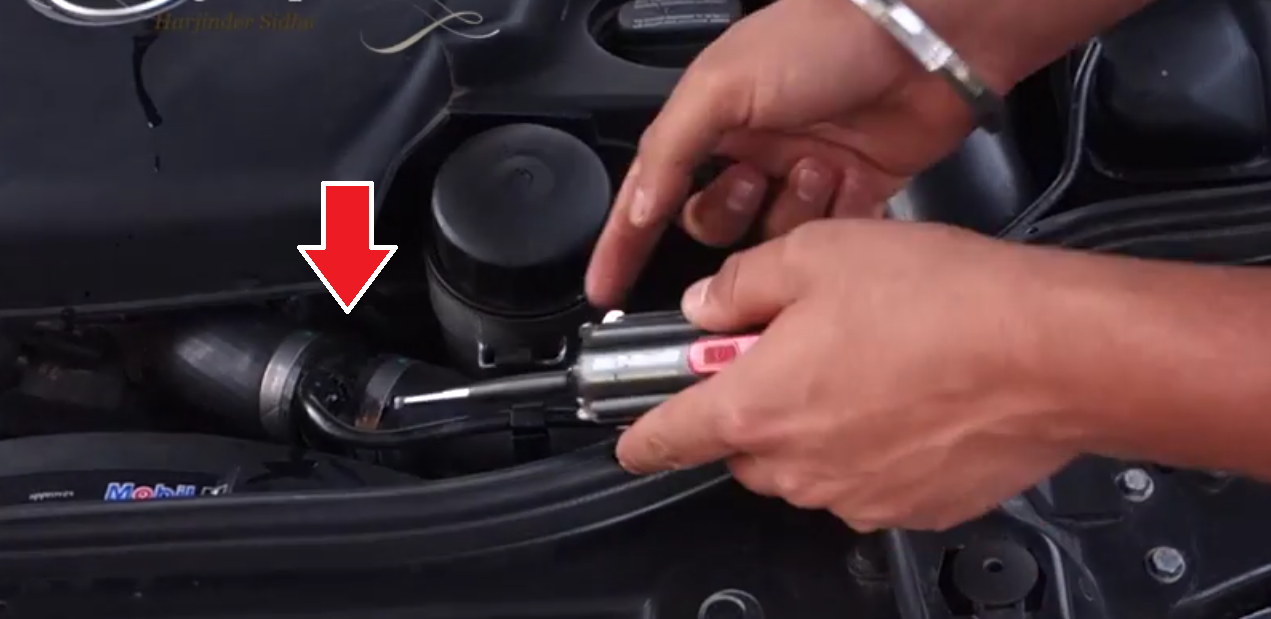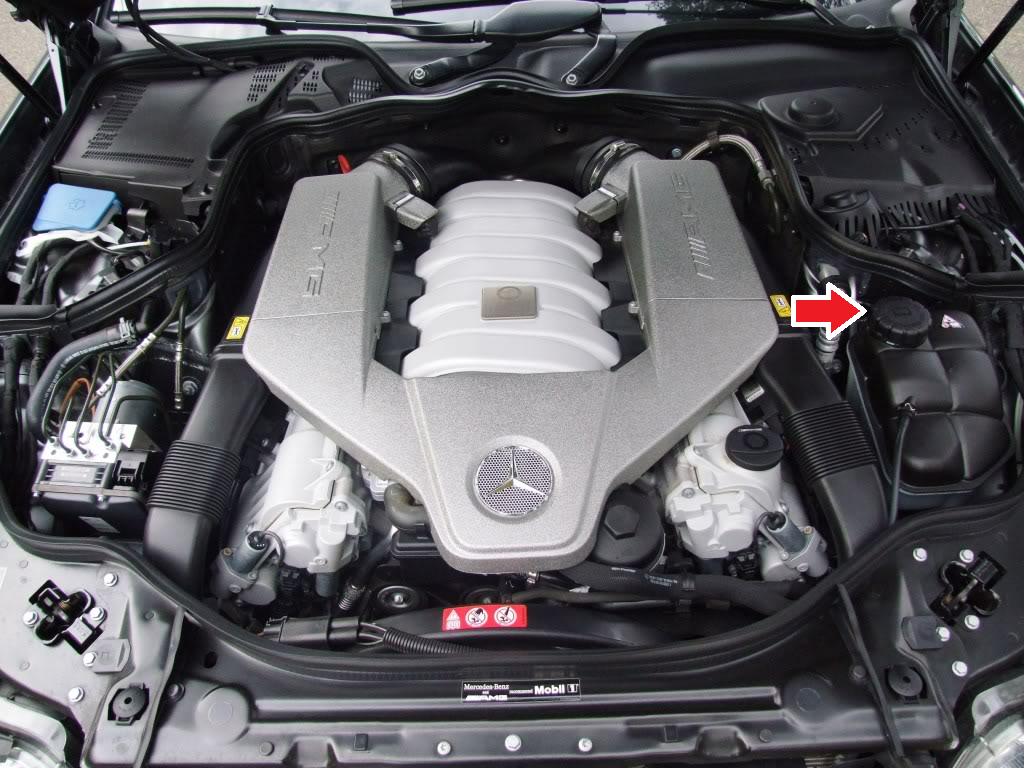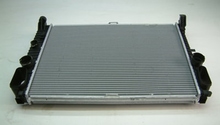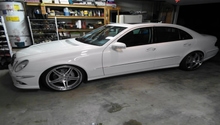Mercedes-Benz E-Class and E-Class AMG: How to Stop Radiator Leak
While replacing a leaking radiator is the best solution, "stop leak" products are available for those Mercedes-Benz E-Class owners who are in a pinch.
This article applies to the Mercedes-Benz E-Class and E-Class AMG w211 (2002-2009).
Almost all radiators on production cars now use plastic end tanks that are prone to premature failure. In the case of the w211 E-Class, regular heat cycling of the engine can make the plastic tanks brittle, and they eventually crack or begin to leak around the seams where they meet the radiator core. Many owners have reported a leaking radiator by the 75K mile mark. So if your car is getting a bit long in the tooth, a radiator leak may be just around the corner.
If a leaking radiator occurs, it is always recommended that a new radiator be installed as opposed to treating the cooling system with a "stop leak" product. However, in a desperate situation, a stop leak product may save your bacon. So if your are in a financial crunch or off in a place where a radiator replacement is not an option, this article will guide you through the radiator stop leak options available and how to use them.

Materials Needed
- Stop leak product
- Eggs, black pepper, external cold weld, ginger, cigarette tobacco (optional)
- Hose clamp tool
- Catch pan
- Funnel
- Hydraulic floor jack and jack stands
- Metric socket set and ratchet (for undertrays)
As previously mentioned, it is highly recommended that a leaking radiator be replaced instead of using a stop leak product to fix the leak. If your current situation requires you to use a stop leak product, continue reading.
(Related Article: How to Replace Radiator - MBWorld.org)
Step 1 – Determine the stop leak product
After properly diagnosing that your car does indeed have a leaking radiator, you must determine which type of stop leak product you would like to use. It is worth noting that while a stop leak product will stop smaller cracks, splits, or pinholes in your radiator, gaping holes in the radiator caused by impact with an object will not usually be fixable with stop leak.
- First, determine whether you plan to fix the leak permanently with a stop leak additive, or if it will simply be used to get your car to a service shop for a radiator replacement.
-
Temporary Fix: If you want to temporarily stop a radiator leak to get to your destination or a service center, an egg, pepper, or external cold weld can be used. An egg or two can be cracked and poured into the cooling system. As the egg heats up, it will cook and make its way towards the leak. If your are lucky, this method will temporarily plug the leak. Similarly, black pepper, ginger, and cigarette tobacco can also be placed into the cooling system to achieve the same effect. If you are able to physically see a crack in the radiator end tank, a cold weld product such as J-B Weld can be applied over the crack for a temporary fix.

-
Permanent Fix: For a potentially permanent fix, a commercially available stop leak product such Bar's Leaks or AlumAseal can be poured into the cooling system. Remnants of these products will usually remain in the cooling system even if it is flushed, and a new radiator can be installed at a later date.

Pro Tip
Several stop leak product manufacturers offer a small tablet consisting of sand or beads that work similar to some of the temporary fixes above. Check your local auto parts store for more details.
Step 2 – Partially drain the coolant and add stop leak
Typically, adding a stop leak product to the cooling system involves pouring the contents into the radiator via the radiator cap. Unfortunately, Mercedes does not use a radiator cap on the E-Class, nor can the stop leak be placed inside of the coolant expansion tank because it will not properly circulate. Before beginning this step, make sure the engine is cool to avoid getting burned by hot coolant.
- In order to insert any of the various stop leak products into the cooling system, the upper coolant hose must be removed and product applied into the hose. First, partially drain some of the coolant via the radiator drain plug. Refer to the Related Article: How to Flush Your Radiator Coolant - MBWorld.org.
-
Remove the upper coolant hose located on the top of the engine (removal of engine cover may be required).
- With the coolant hose disconnected, follow the stop leak product's instructions and pour product into the coolant hose. If using pepper, ginger, or tobacco, it is best to add a few tablespoons to ensure the particles make their way to the source of the leak. If using an egg, simply crack the egg, put its contents into the hose, and then discard the shell.
-
Re-install the hose and fill coolant expansion tank with coolant until full.


Pro Tip
If using a temporary exterior cold weld on the radiator, draining the coolant may not be necessary as the product can be applied on the outside of the leaking radiator. If coolant puddles at the leaking area when the engine is off, it is best to drain the coolant from the radiator. In either case, make sure the area is clean and dry before applying the product.
Step 3 – Start the car and inspect for leaks
-
With all hoses connected, coolant tank topped off, and stop leak product placed into the cooling system, start the car.
- Let the car idle to allow the stop leak to circulate through the radiator. Keep an eye on your coolant expansion tank, and top off with coolant as necessary.
- If using a commercially available stop leak product, follow the run-time instructions on the product label. If using one of the temporary organic stop leak methods, allow the car to run for 10 to 15 minutes.
- After allowing the engine to run for a sufficient amount of time, check the area of the radiator that was previously leaking. If it is dry, you are all set and may travel to your destination. If the leak persists, repeat Steps 2 and 3 once the engine has cooled down.

Related Discussions
- Head Gasket in a Bottle?- MBWorld.org
- Radiator Leak - MBWorld.org
- Catastrophic Radiator Failure? - MBWorld.org






